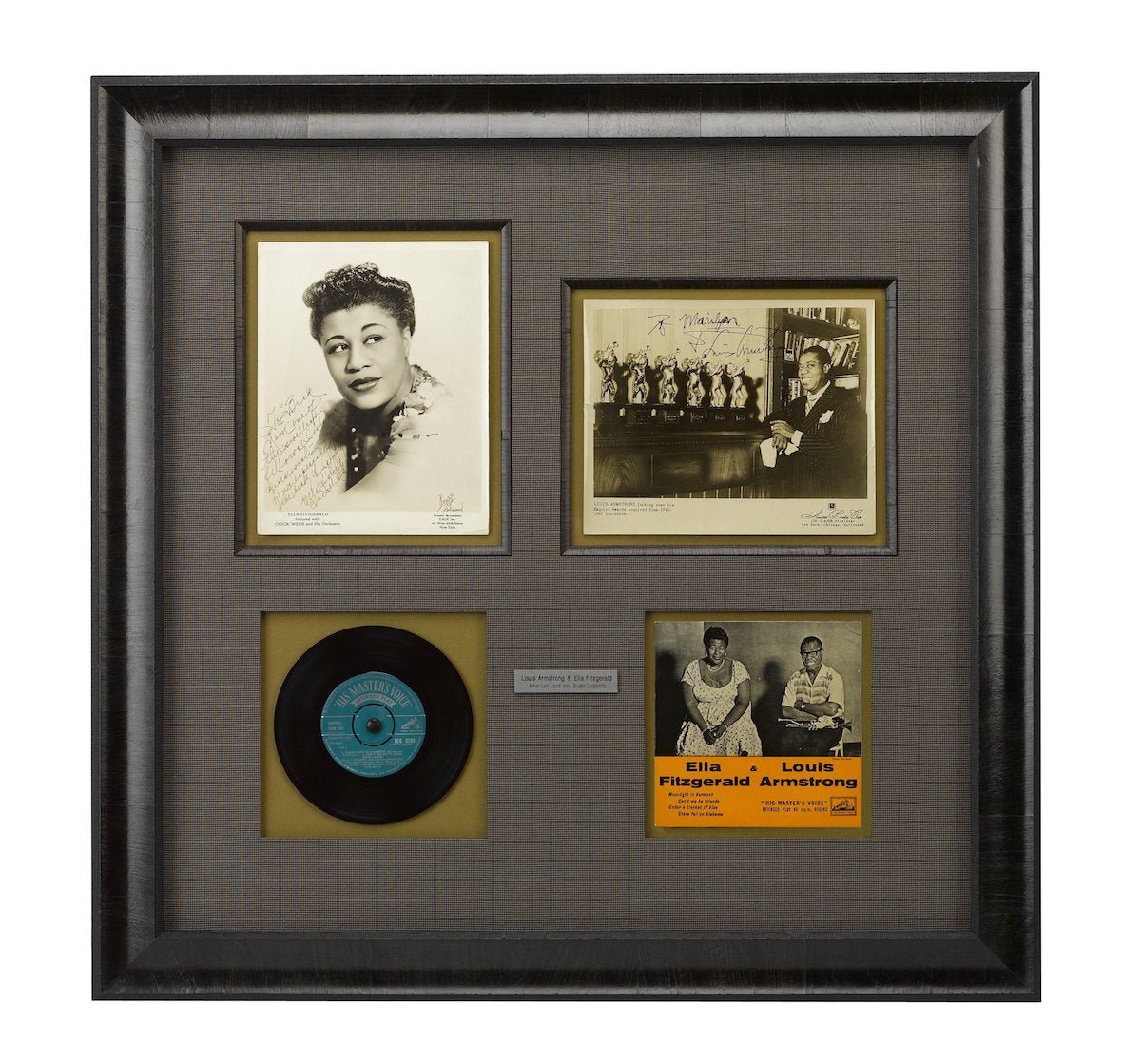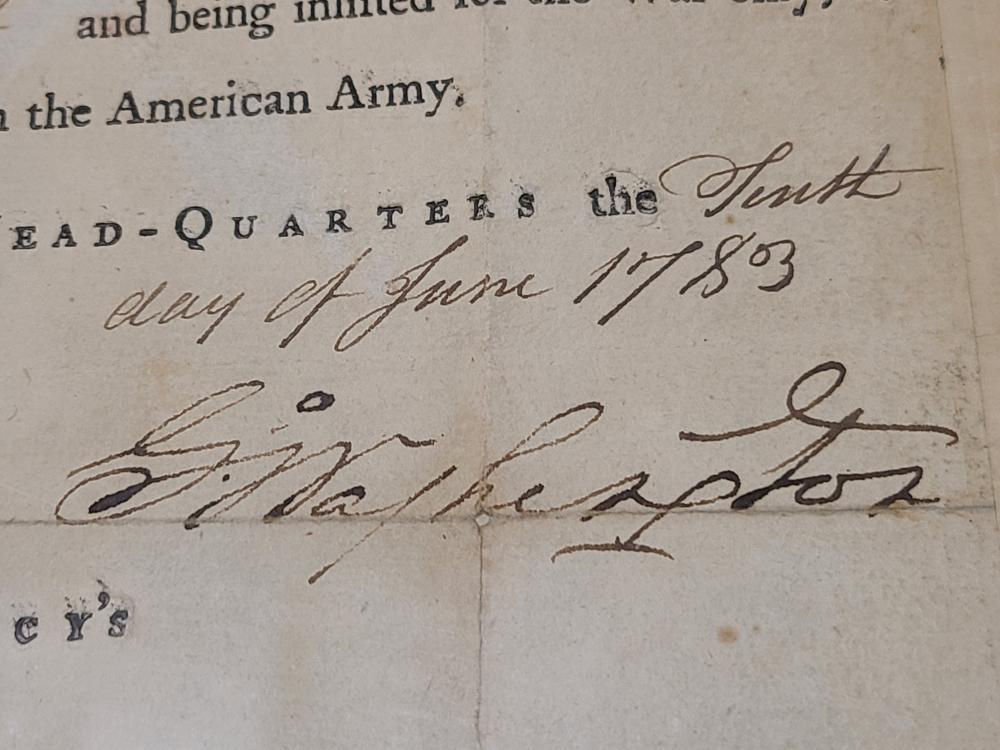New Arrival! George Washington Signed Discharge Document
Perhaps one of the most desirable pieces of antique Americana is an authentic signature from first president George Washington. We at The Great Republic were able to acquire an incredible document, signed by Washington, which we presented in a custom archival frame.
George Washington Signed Military Discharge Collage
This is a Revolutionary War discharge document for Corporal Benjamin Dix, signed by General George Washington, and dated June 10, 1783. Corporal Dix served in the 3rd Connecticut Regiment for "six years" and fought in the New York campaign. Dix was discharged from the Continental Army at the close of the war, after receiving the Badge of Military Merit, the predecessor of the Purple Heart, from General Washington. Recognition for a job well done and six years of dedicated service, this boldly signed official discharge document is a remarkable piece of early American history.
The main fighting in the Revolutionary War came to an end when British General Charles Cornwallis surrendered at the Siege of Yorktown in October 1781. However, Washington retained control of the Continental Army until an official peace between Britain and the United States was established. On April 18, 1783, Washington issued General Orders to the officers and troops of the Continental Army, announcing the "Cessation of Hostilities between the United States of America and the King of Great Britain." In these written orders, he congratulates the Army, noting that those who have performed the "meanest office" have participated in a great drama "on the stage of human affairs." He continues, "[n]othing now remains but for the actors of this mighty Scene to preserve a perfect, unvarying, consistency of character through the very last act; to close the Drama with applause; and to retire from the Military Theatre with the same approbation of Angels and men which have crowned all their former virtuous Actions."
This one page, oblong discharge document is partially printed and partially inscribed in black ink. The discharge was issued from “Head Quarters'' at Hasbrouck House in Newburgh, New York, and features a large “Go. Washington” signature in the middle of the page, right of center. The document is countersigned by Jonathan Trumbull, Jr. as secretary and Joseph Clark. Jonathan Trumbull, Jr. served for the duration of the war as aide-de-camp to General George Washington. The bottom of the document also notes that Dix was presented the Badge of Merit for six years of faithful service and is so signed by Sam D. Nebblot.
The document reads, in full:
- Trumbull, Jr.
Benjamin Dix was born on March 26, 1757, in Wethersfield, Connecticut. Dix served in the 3rd Connecticut division. During his period of service, Corp. Dix and the 3rd Connecticut Regiment took part in the New York and New Jersey campaigns. Following his war service, the Dix family moved to Montpelier, Vermont. Dix passed away on June 19, 1827, in Montpelier, Vt.
The rare signed discharge document is paired with a full-length portrait of George Washington, engraved by Oliver Pelton, circa 1850, after the famous painting by Gilbert Stuart. President Washington posed for painter Gilbert Stuart on April 12, 1796 for this painting, now referred to as the Lansdowne portrait. The standing portrait shows President George Washington in front of neoclassical columns. In his right hand, Washington holds a dress sword, hinting at his military prowess and his significant role as Commander in Chief. To his left is a table strewn with books, scrolls, a quill and an ink pot, to signify the rule of law. An impression of this particular Pelton engraving hung in Lincoln’s home in Springfield, Illinois. Oliver Pelton (1798 – 1882) was an American artist; he engraved several portraits of Washington throughout his career.








